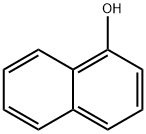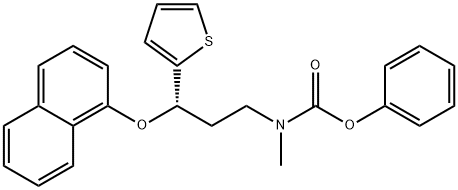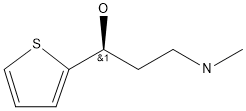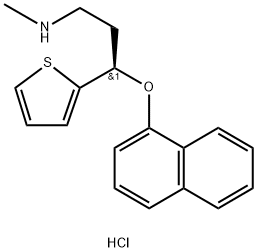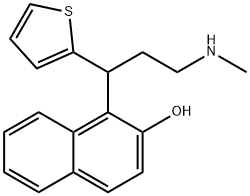1-Naphthol , Super pure level, ≥99% , 90-15-3
Synonym(s):
α-Naphthol;1-Hydroxynaphthalene;1-Naphthol;Duloxetine impurity D (PhEur)
CAS NO.:90-15-3
Empirical Formula: C10H8O
Molecular Weight: 144.17
MDL number: MFCD00003930
EINECS: 201-969-4
| Pack Size | Price | Stock | Quantity |
| 25G | RMB239.20 | In Stock |
|
| 50G | RMB383.20 | In Stock |
|
| others | Enquire |
PRODUCT Properties
| Melting point: | 94-96 °C(lit.) |
| Boiling point: | 278-280 °C(lit.) |
| bulk density | 450kg/m3 |
| Density | 1.224 |
| vapor density | 4.5 (120 °C, vs air) |
| vapor pressure | 1 mm Hg ( 94 °C) |
| refractive index | 1.6224 |
| Flash point: | 125 °C |
| storage temp. | Store below +30°C. |
| solubility | Soluble in benzene, chloroform, ether and ethanol. |
| pka | 9.34(at 25℃) |
| form | Crystalline Flakes |
| color | white to off-white |
| Odor | Slight phenolic odor |
| explosive limit | 5% |
| Water Solubility | 436.7mg/L(25 ºC) |
| λmax | 324nm(MeOH)(lit.) |
| Sensitive | Air & Light Sensitive |
| Merck | 14,6383 |
| BRN | 1817321 |
| Stability: | Stable, but air and light sensitive - store under inert gas. Incompatible with strong bases, strong oxidizing agents. |
| InChIKey | KJCVRFUGPWSIIH-UHFFFAOYSA-N |
| LogP | 2.84 at 25℃ |
| CAS DataBase Reference | 90-15-3(CAS DataBase Reference) |
| NIST Chemistry Reference | 1-Naphthalenol(90-15-3) |
| EPA Substance Registry System | 1-Naphthol (90-15-3) |
Description and Uses
1-Naphthol, or α-naphthol, is a fluorescent organic compound with the formula C10H7OH. It is a white solid. It is an isomer of 2-naphthol differing by the location of the hydroxyl group on the naphthalene ring. The naphthols are naphthalene homologues of phenol, with the hydroxyl group being more reactive than in the phenols. Both isomers are soluble in simple alcohols, ethers, and chloroform. They are precursors to a variety of useful compounds. Naphthols (both 1 and 2 isomers) are used as biomarkers for livestock and humans exposed to polycyclic aromatic hydrocarbons.
α-naphtol, combined with epichlorhydrine and sodium hydroxide to form alpha-naphtyl glycidyl ether, caused sensitization in one of three workers in a chemical plant.
1-Naphthol is used as a precursor in the manufacturing of various azo dyes and pharmaceuticals such as nadolol. It is used as biomarkers. It is used in analytical chemistry as Molisch's reagent (1-naphthol dissolved in ethanol) for checking the presence of carbohydrates. It plays an essential role with sodium hypobromite to detect the presence of arginine in proteins, which is called as Sakaguchi test.
Safety
| Symbol(GHS) |     GHS05,GHS06,GHS08,GHS09 |
| Signal word | Danger |
| Hazard statements | H302-H311-H315-H317-H318-H335-H371-H410 |
| Precautionary statements | P273-P280-P301+P312-P302+P352+P312-P305+P351+P338-P308+P311 |
| Hazard Codes | Xn,N |
| Risk Statements | 21/22-37/38-41-51/53 |
| Safety Statements | 22-26-37/39-2-61 |
| RIDADR | UN 2811 6.1/PG 3 |
| WGK Germany | 1 |
| RTECS | QL2800000 |
| F | 8-23 |
| Autoignition Temperature | 510 °C |
| TSCA | Yes |
| HazardClass | 6.1 |
| PackingGroup | III |
| HS Code | 29071510 |
| Hazardous Substances Data | 90-15-3(Hazardous Substances Data) |
| Toxicity | LD50 orally in Rabbit: 1870 mg/kg LD50 dermal Rabbit 880 mg/kg |

